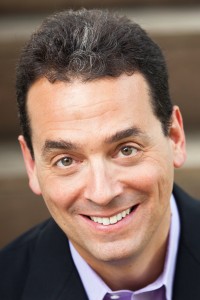Daniel H. Pink: A Catalyst for Change
 Over the span of five books, Daniel H. Pink has explored the changing world of work, served as an impetus for changing minds and organizations and been translated into 34 languages and a best-seller in the process. Pink’s articles on business and technology have appeared in The New York Times, Harvard Business Review, The Sunday Telegraph, Fast Company and Wired, while his wisdom is regularly sought by Fortune 100 companies and startups on on recruiting, innovation and work practices. His latest book, To Sell Is Human: The Surprising Truth About Moving Others, brings Pink front and centre at the 53rd Annual HRMA Conference + Tradeshow to offer a fresh look at the art and science of influence.
Over the span of five books, Daniel H. Pink has explored the changing world of work, served as an impetus for changing minds and organizations and been translated into 34 languages and a best-seller in the process. Pink’s articles on business and technology have appeared in The New York Times, Harvard Business Review, The Sunday Telegraph, Fast Company and Wired, while his wisdom is regularly sought by Fortune 100 companies and startups on on recruiting, innovation and work practices. His latest book, To Sell Is Human: The Surprising Truth About Moving Others, brings Pink front and centre at the 53rd Annual HRMA Conference + Tradeshow to offer a fresh look at the art and science of influence.
What do you see as the greatest strength and challenge of having five generations in the workplace?
I’ve long felt that the differences between generations are somewhat overblown. So there actually more strengths than challenges. In particular, multiple generations give an organization greater diversity in ideas and points of view—and that diversity is essential for innovation. Meantime, few of us as individuals have the proper balance between experience and fresh thinking. But multiple generations allow that at the organization level, which can be powerful.
Where do you see HR having the ability to most positively influence the organizational bottom line?
Just about everywhere, actually. At the moment, there’s a fault line developing between organizations. Some are doubling down on a control-oriented managerial approach. Others are taking a new approach—one that emphasizes autonomy as a pathway to accountability, the ability of people to make progress, and a sense of purpose. HR professionals, who understand talent better than anyone in the organization, can help the folks in the C-suite come down on the right side of that divide.
How integral is HR to innovation within an organization?
It’s huge. Today, talented people need organizations a lot less than organizations need talented people. That puts talent—finding it, nurturing it, challenging it—at the center of any organization’s concerns. Again, since HR folks know talent inside and out, that makes them integral to an organization’s potential.
What do you view as the number one deterrent and catalyst to workplace innovation?
Can I pick two deterrents? The first, which applies only to publicly held companies, is the obsession with quarterly performance. If that’s all corporate leaders care about, they’ll put off workplace innovation again and again and again—until it’s too late.
Second, inertia. It’s the most powerful force in the universe. If I do something a certain way on Wednesday, the odds are exceptionally good I’ll do it the same way on Thursday. Multiply that within an organization of 1000 or 10,000 people—and, absent a near death experience, it’s often tough to make big changes quickly.
As for the catalyst, the best approach is for leaders to err on the side of autonomy rather than control.
Any tips on ‘selling’ HR to to leadership within organizations with antiquated perceptions?
Sure. First, maybe we should stop calling it “human resources.” (Of course, that would mean renaming HRMA!) Resources—think timber, water, land—are inert and without volition. Talent is the exact opposite of that.
Second, when HR folks make the case to senior management they should always, always, always lead with the potential results and gains for the bottom line. Instead of saying, “You know, we ought to give our people more autonomy. That would make them happier,” they should say, “I’ve been watching other companies and they’ve come up with a rather remarkable and effective way to increase revenue, innovation, and profit.”
That will lead to a far more fruitful conversation.
(PeopleTalk Spring 2015)
What more Daniel Pink?
Tickets are available to see Daniel Pink at the HRMA Conference + Tradeshow at 3:30pm on April 29. Or, register for The Drive Workshop™ happening June 10, 2015 in Vancouver. This workshop, based on Daniel Pink’s Drive, brings the core principles of the book—automony, mastery, purpose—to life in a way that can transform your organization and team.









